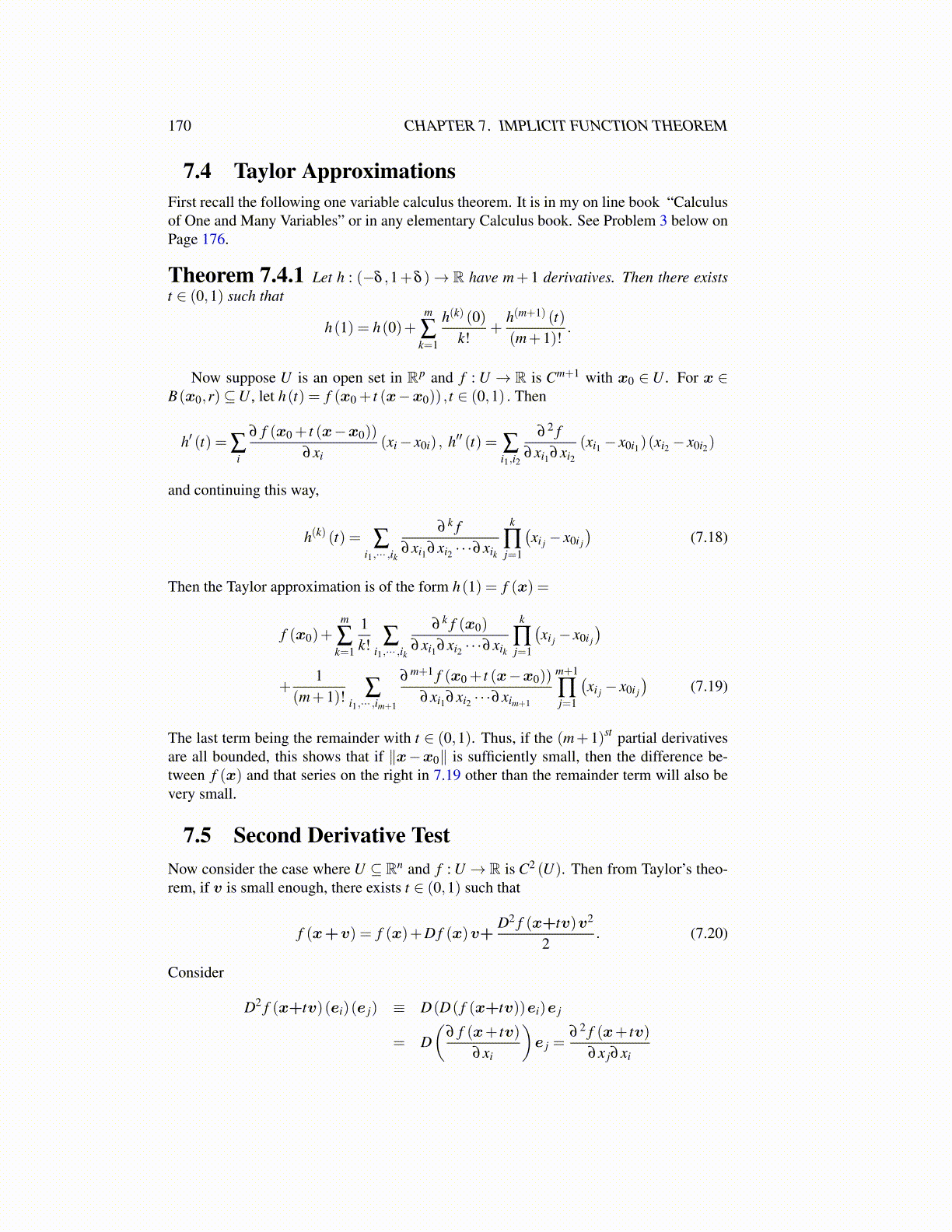
170 CHAPTER 7. IMPLICIT FUNCTION THEOREM
7.4 Taylor ApproximationsFirst recall the following one variable calculus theorem. It is in my on line book “Calculusof One and Many Variables” or in any elementary Calculus book. See Problem 3 below onPage 176.
Theorem 7.4.1 Let h : (−δ ,1+δ )→ R have m+ 1 derivatives. Then there existst ∈ (0,1) such that
h(1) = h(0)+m
∑k=1
h(k) (0)k!
+h(m+1) (t)(m+1)!
.
Now suppose U is an open set in Rp and f : U → R is Cm+1 with x0 ∈U . For x ∈B(x0,r)⊆U , let h(t) = f (x0 + t (x−x0)) , t ∈ (0,1) . Then
h′ (t) = ∑i
∂ f (x0 + t (x−x0))
∂xi(xi− x0i) , h′′ (t) = ∑
i1,i2
∂ 2 f∂xi1∂xi2
(xi1 − x0i1)(xi2 − x0i2)
and continuing this way,
h(k) (t) = ∑i1,··· ,ik
∂ k f∂xi1∂xi2 · · ·∂xik
k
∏j=1
(xi j − x0i j
)(7.18)
Then the Taylor approximation is of the form h(1) = f (x) =
f (x0)+m
∑k=1
1k! ∑
i1,··· ,ik
∂ k f (x0)
∂xi1∂xi2 · · ·∂xik
k
∏j=1
(xi j − x0i j
)+
1(m+1)! ∑
i1,··· ,im+1
∂ m+1 f (x0 + t (x−x0))
∂xi1∂xi2 · · ·∂xim+1
m+1
∏j=1
(xi j − x0i j
)(7.19)
The last term being the remainder with t ∈ (0,1). Thus, if the (m+1)st partial derivativesare all bounded, this shows that if ∥x−x0∥ is sufficiently small, then the difference be-tween f (x) and that series on the right in 7.19 other than the remainder term will also bevery small.
7.5 Second Derivative TestNow consider the case where U ⊆ Rn and f : U → R is C2 (U). Then from Taylor’s theo-rem, if v is small enough, there exists t ∈ (0,1) such that
f (x+v) = f (x)+D f (x)v+D2 f (x+tv)v2
2. (7.20)
Consider
D2 f (x+tv)(ei)(e j) ≡ D(D( f (x+tv))ei)e j
= D(
∂ f (x+ tv)∂xi
)e j =
∂ 2 f (x+ tv)∂x j∂xi